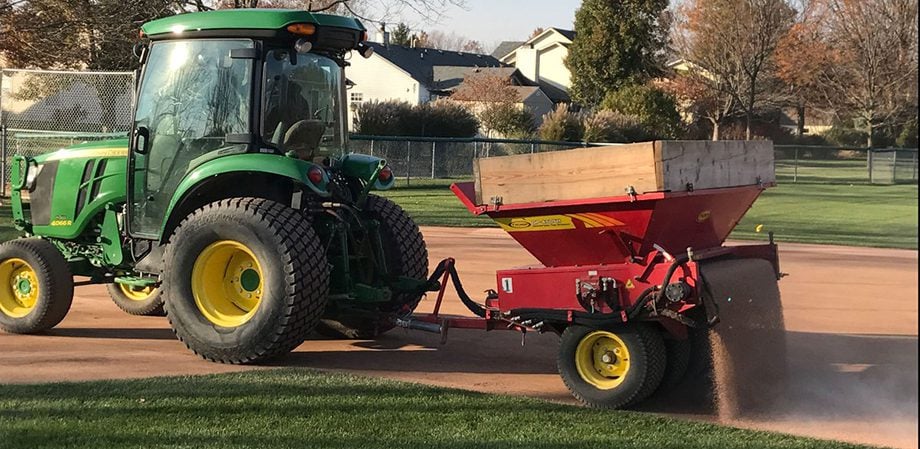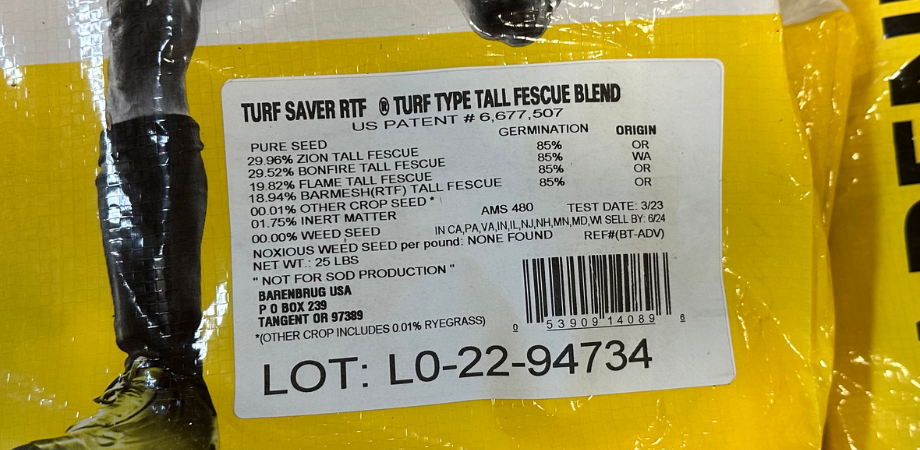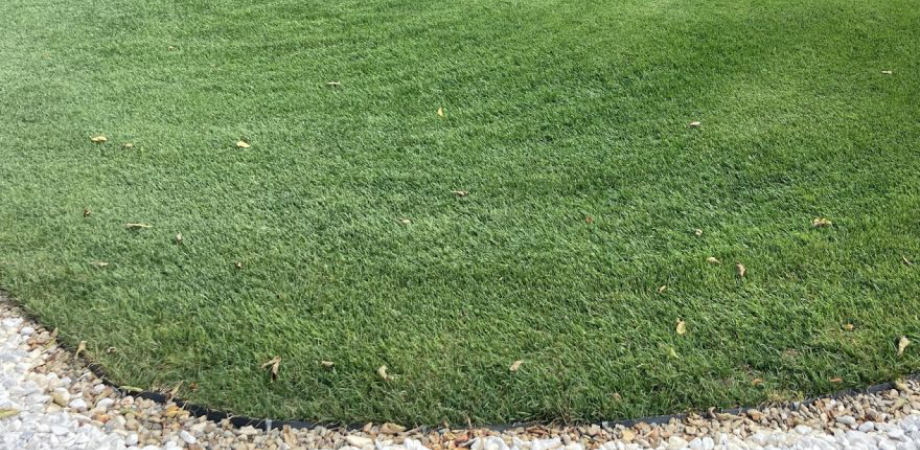Two kinds of topdressing occur on baseball and softball fields: one on the turf and the other on the infield. They have different processes but a similar concept, which is to finish the surface by adding material on top. This blog post will cover both types of topdressing.
Turf Topdressing
First, let’s talk about topdressing the turf on the field. It’s a useful practice to support plant health and create a smooth playing surface, which keeps athletes safe during play. It also decreases thatch and creates a superior seedbed for germination.
Topdress your turf with sand that is slightly coarser in size than your current profile. Sand that is too fine will lead to drainage issues. Likewise, dissimilarity in the particle sizes within the topdressing material can cause layering, which restricts water movement through the root zone.
It’s also important to use enough topdressing material to keep up with organic matter. Using enough topdressing material helps reduce layering, as does brushing the sand in after heavy topdressing. Aeration in conjunction with topdressing is another helpful practice.
Infield Topdressing
The topdressing of an infield is the top ¼–½ inches of material on the surface. More than ½ inch of topdressing will make the surface too loose when dry. There are three major categories of infield topdressing: calcined clay, vitrified clay, and crushed aggregates.
Calcined clay is baked between 1,200 to 1,400°F in rotary kilns. It is an extremely absorbent material that slowly releases moisture back into the soil. Calcined clay is typically a reddish-tan color. Within the calcined clay category are drying agents, which cover more surface area and dry more quickly than a standard calcined clay material.
Vitrified clay is baked at over 2,000°F in rotary kilns. It has low moisture absorption capabilities and dries quickly.
Crushed aggregates are typically decomposed granite or brick dust. They break down more quickly than calcined or vitrified clays and can increase elevation too much. Brick dust is also an abrasive material that can stain uniforms.
Topdressing is a beneficial practice on both the turf and infield areas of your field. Reach out to your ATS representative to plan a topdressing program that will help keep your entire field safe and playable.












